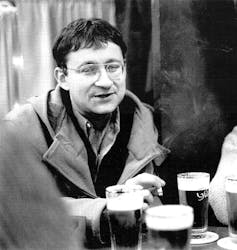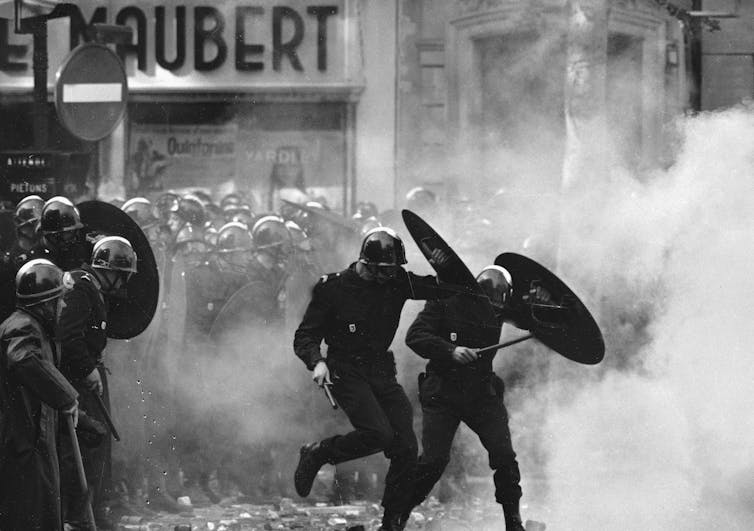Rachel Kushner’s revolutionary spy novel reflects on our hurtle towards extinction
The recipient of several major literary awards and a former Guggenheim Fellow, Kushner, who has a background in political economy and United States foreign policy, uses her fiction to explore the historical and geopolitical pressures that bear down on and determine everyday life and patterns of social behaviour.
“What is shaping people? What are the pressures that delineate how they think, act, speak?” These are some of the questions she poses in her body of work.

Her new novel, Creation Lake (2024), is longlisted for this year’s Booker Prize and tackles the topic of ecological terrorism. Clearly inspired by influential spy and crime writers like John le Carré and Jean-Patrick Manchette, it subverts genre conventions and playfully challenges reader expectations.
A touch more tonally measured than her previous novels, Creation Lake is by far Kushner’s most accomplished and engrossing work to date.
We get a sense of the scale and depth of Kushner’s interests in her debut novel, Telex from Cuba (2008). Set in the years leading up to the Fidel Castro helmed revolution of 1959, the novel interrogates questions of gender and the brutalities of colonialism, and sheds fresh light on what now seems, somehow, to be a long-distant, half-forgotten historical moment.
Kushner’s interest in explosions of revolutionary fervour and periods of social upheaval carries over into her geographically and temporally expansive second book, The Flamethrowers (2013), an exhilarating account of radicalism, motorcycle racing and avant-gardism that unfurls against the politically charged backdrop of 1970s Italy.
After addressing the interwoven issues of inequality and mass incarceration in contemporary America with her third novel, The Mars Room (2018), set in a women’s prison, Kushner shifts her focus back to Europe in her audacious new page-turner.
Taking part in troubled times
“All my life I have seen only troubled times, extreme divisions in society, and immense destruction; I have taken part in these troubles.”

This is how the French Marxist writer, filmmaker and agitator Guy Debord’s autobiography opens. Published in 1989, Debord’s provocative Panegyric weaves together his personal history with a radical critique of modern society, reflecting on his role in the revolutionary social and cultural upheavals of May 1968 – a heady period of mass demonstrations, violent street clashes, and nationwide strikes led by French workers and university students.
Debord and these events, which effectively paralysed France and reverberated around the world, provide crucial context for the action of Creation Lake.
The novel is narrated by a 34-year-old American who calls herself Sadie Smith. Kushner’s ruthlessly dispassionate protagonist, an occasionally unreliable narrator with a fondness for drink, appreciates “that iconic beauty involves some deviation from universal standards, and I don’t have that kind of beauty. I wouldn’t want it.”
She continues:
My banal and conventional looks have served me well. People think I look familiar. Have I met you? they ask. But I’m merely what white women are meant to look like. Symmetrical face, small straight nose, regular features, brown eyes, brown hair, clear skin: these are not identifying descriptors.
The reason Sadie’s relatively ordinary appearance has proven advantageous lies in her line of work. Once employed by the FBI in an undisclosed role, she now works as a freelance undercover agent, specialising in espionage.
Despite having been let go, it appears that Sadie is still very good at her job (though perhaps not quite as good as she would have us believe). She gets paid a king’s ransom to infiltrate and undermine various criminal and left-wing activist movements.
Hired to disrupt eco-activism
Creation Lake is set in a remote southwest corner of France and takes place in 2013. Sadie has been sent here by powerful, faceless employers to keep tabs on and disrupt the pursuits of a group of radical eco-activists who have established a commune called Le Moulin.
This group, whose activities echo historical reality, is suspected of sabotaging government-owned earth-moving equipment at the site of a massive industrial drainage basin under construction in the French countryside.
This is where Guy Debord – who, like Sadie, was always fond of a tipple – comes into it. The Moulinards are led by Pascal Balmy, an independently wealthy young intellectual and womaniser who sees himself as Debord’s political successor.
At the start of the novel, it is revealed that the fictional Balmy and his band of anarchist saboteurs are in touch with the equally fictitious Bruno Lacombe, an enigmatic recluse and close confidant of Debord during the 1950s and 1960s. Sadie brings the reader up to speed:
Back in ‘68, Guy Debord and Bruno Lacombe had both believed, as many had believed, that an uprising, when it came, would happen first in cities, whose labor conditions, a density of factories and people who had little option but to work in them, were the necessary ingredients for change.
She adds: “Some event, such as the killing of an unarmed young man by police, would spark a revolt, and people would rise up, torch automobiles, occupy public buildings, and set up barricade to fight the state.”

The portrait Sadie paints here is accurate. “This sort of thing had taken place all over Europe in the half century since the 1960s,” Kushner writes. By the same token, as the novel points out, “none of these eruptions had resulted in the overthrow of capitalism in any of the advanced industrial nations of the entire European continent – not a single one.”
Spycraft and illegal acts
These setbacks left real-life leftists like Debord disenchanted and depressed. He traded Paris for an isolated cottage in the Auvergne, where he slowly and steadily destroyed himself with alcohol, before ultimately shooting himself in the heart.
Bruno Lacombe stages an equivalent – albeit imaginary – retreat. Coming to the conclusion that there is no possibility of overthrowing capitalism, Lacombe withdraws to the forests of Guyenne, choosing to live in a Neanderthal cave. From there, he begins discoursing about prehistory and advocating for a return to primitivism (ironically enough, via an email account that Sadie has managed to hack).
Bruno reminds the Moulinards, who consider him an ideological kindred spirit and something of a mentor, that the left has:
endured a long twentieth century and its defeats, its failures and counterrevolutions. Now more than a decade into the twenty-first, it is time to reform consciousness […]. Not through isms. Not with dogma. But by summoning the most mystical secrets we have kept from ourselves: those concerning our past.
Taking certain of their cues from Bruno, the militant Moulinards set out to scupper the French government’s plan to divert local water supplies into large-scale reservoirs. Colloquially referred to as megabasins, these artificial waterways are intended to support corporate agribusiness projects, which Pascal Balmy and his fellow travellers believe will severely damage the environment and disadvantage local farmers.
It falls to Sadie, who finds herself increasingly drawn to Bruno’s peculiar brand of mystical idealism, to stop them. Following orders from her shadowy paymasters, she uses her extensive experience in the dark art of tradecraft to pressure the Moulinards into committing illegal, violent and murderous acts.
Everything seems to be on track, leading to a dramatic climax at a rural agricultural fair. But things don’t quite turn out as Sadie – or the reader – might expect.
‘An ideas novel that’s not boring’
I am conscious this potted summary runs the risk of making Creation Lake sound like a rather conventional sort of spy or crime thriller. But nothing could be further from the truth.
While she clearly understands how these genres work, Kushner, who has described Creation Lake as a homage to the aforementioned Manchette, seems more interested in the opportunities they might afford her as a writer than in adhering to their familiar formulas.
She confirms this in a recent interview with The Guardian. “I wanted to write an ideas novel that’s not boring, an ideas novel that someone can read and read,” she says.
This helps to explain what Kushner is driving at Creation Lake – which, for me, is one of the most important novels to have been published in recent memory. She is mobilising longstanding genre tropes to reflect on our current, crisis-ridden historical juncture – and to question whether there might be different, better ways of being and doing.
Indeed, as Bruno Lacombe puts it in one of his emails to the Moulinards:
Examinations of the past, of dirt and DNA, could show us new ideas of where the entire project on earth might have headed. Currently […] we are headed toward extinction in a shiny, driverless car, and the question is: How do we exit this car?
The question is a good one. It’s surely worth keeping in mind as we hurtle, at an escalating and terrifying pace, from one seemingly inescapable calamity to the next.



